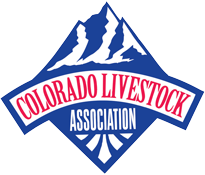Dr. Jay Ham, PhD, Colorado State University
Perhaps nowhere is ammonia from livestock under greater scrutiny than along the Front Range of Colorado. Increased levels of atmospheric nitrogen deposition are having a negative impact on the ecology of Rocky Mountain National Park, a crown jewel of the National Park System. While studies suggest many different sources are contributing to nitrogen deposition in the park (e.g., urban, out of state sources), much attention has been directed to the beef feedlots and dairies that populate the plains just east of the mountains.
Once ammonia enters the atmosphere it can convert to an aerosol and travel long distances from the source. Most of this fugitive nitrogen is eventually deposited back to the ground when scavenged from the air by precipitation. Unfortunately, this unintentional nitrogen transport and fertilization is having a negative ecological impact on pristine ecosystems around the globe. Thus, it is not surprising that livestock ammonia is an area of growing public concern and regulatory debate.
Over the last 10 years Colorado Livestock Association has been actively involved with the issue of nitrogen deposition and recently engaged Dr. Jay Ham, a micrometeorology and environmental physics expert as the lead principle investigator for a pilot project known as the Early Warning System. In 2013, Colorado’s livestock and crop producers and researchers at Colorado State University, with funding from the Colorado Department of Public Health and Environment and the National Park Service, began developing a weather based “warning system” to inform crop and livestock producers of impending weather events that have a high likelihood of moving nitrogen emissions from eastern Colorado into RMNP. The goal of the Early Warning System is to study the effectiveness of the implementation of best management practices (BMPs) and their effect on reduction of nitrogen deposition in Rocky Mountain National Park. The warning system gives producers the opportunity to voluntarily apply certain conservation management practices to reduce ammonia during strategic times when they will be most beneficial.
About Dr. Jay Ham
Jay Ham grew up near Garden City, Kansas where his family was actively engaged in agriculture, including management of beef feedlots and irrigated corn production. Prior to joining CSU, he was a professor at Kansas State University from 1991 to 2008 and worked closely with the Kansas Livestock Association on a range of environmental issues facing the industry.
Dr. Ham joined the Department of Soil and Crop Sciences at Colorado State University in 2008 with an appointment that includes research, teaching, and extension responsibilities. Prior to joining the faculty at CSU, he led a program in Micrometeorology and Environmental Physics for 18 years at Kansas State University. Dr. Ham’s research includes: (1) evaluation of air and water quality issues at animal feeding operations; (2) instrumentation development for environmental, soil, and crop research; (3) micrometeorological studies of water, carbon, and contaminant transport between the surface and atmosphere; and (4) air quality impacts of oil and gas development. His teaching responsibilities include courses in micrometeorology and research proposal development.
Dr. Ham acts as lead investigator for several federally-funded research projects ($1.75 million) that focus on ammonia emissions from feedlots and dairies. This work includes the develop of management practices to reduce emissions from livestock operations and track atmospheric transport of ammonia along the Front Range – including nitrogen deposition in Rocky Mountain National Park. Jay and his team were recently awarded a new grant as part of the National Robotics Initiative (NSF and USDA) to develop air quality robotics for use at feedlots and dairies. Other research interests include the air quality impacts of hydraulic fracturing used in oil and gas exploration.
